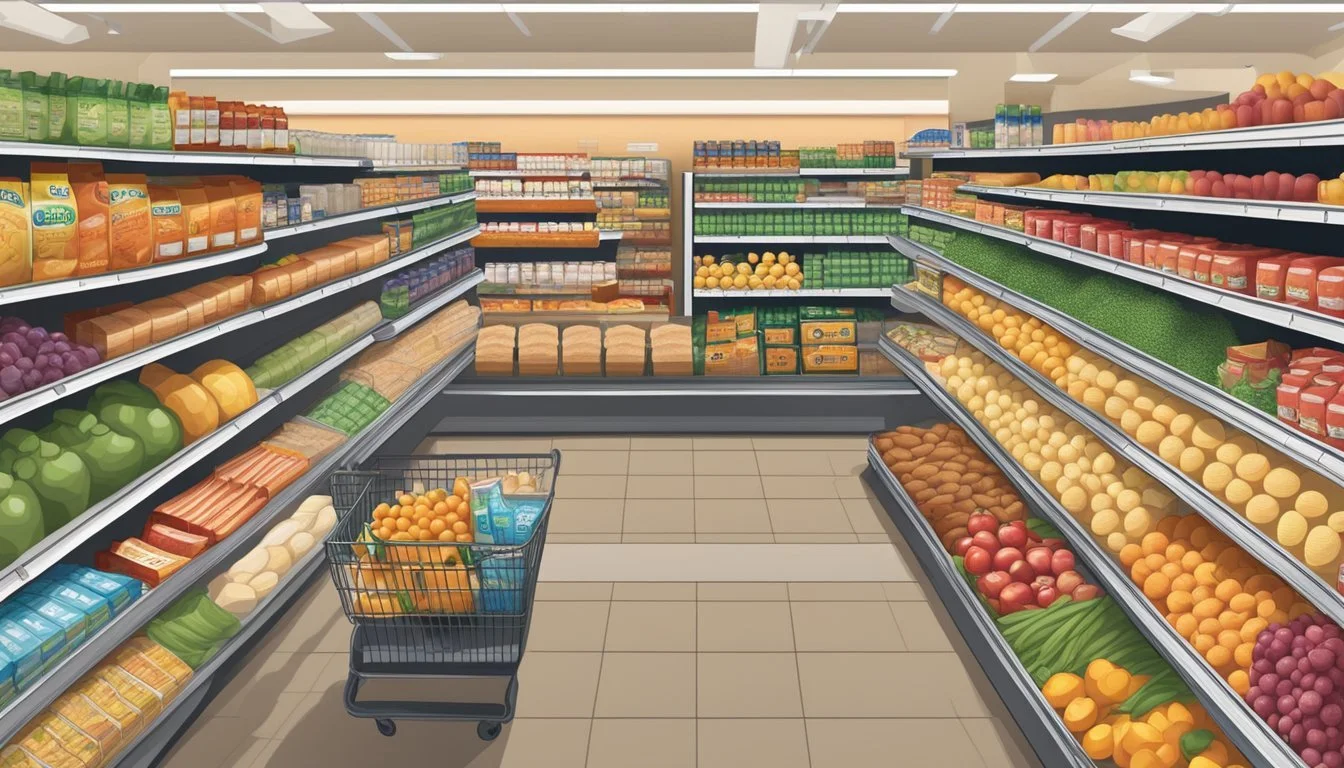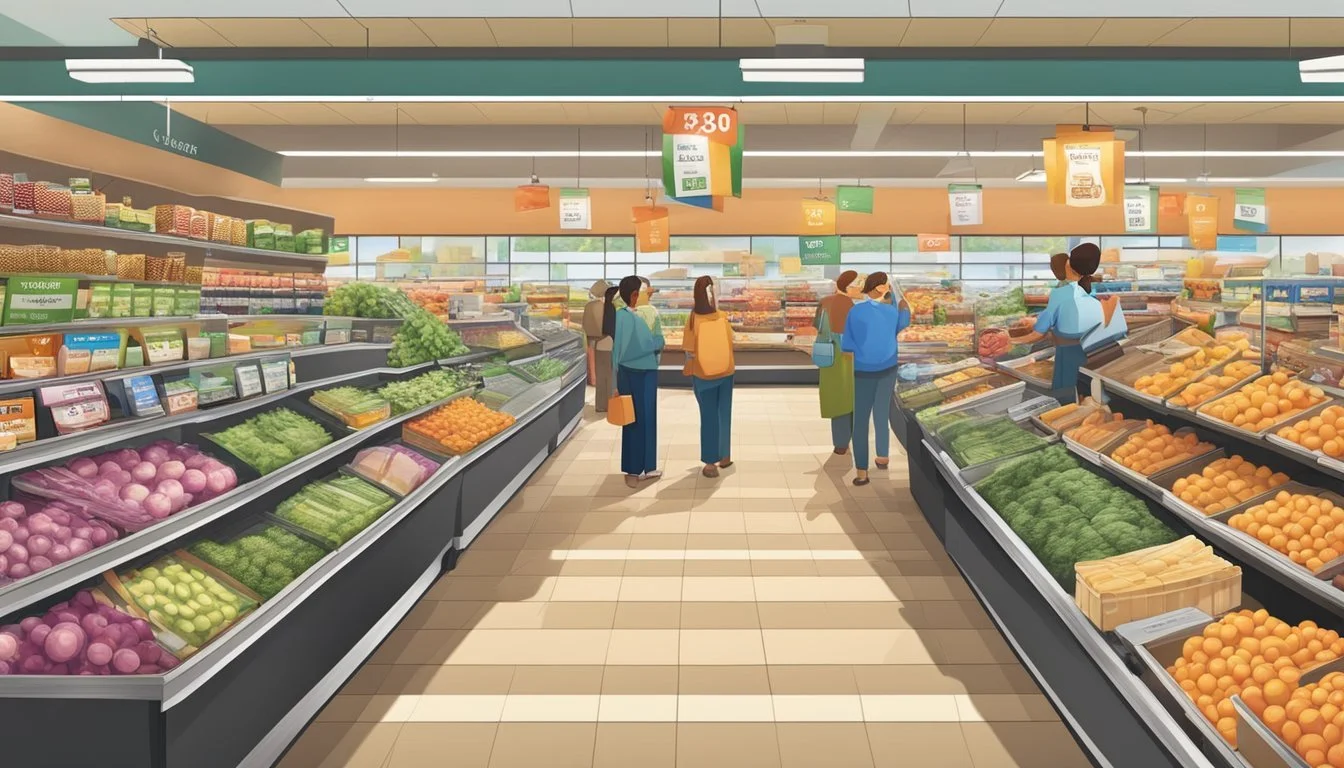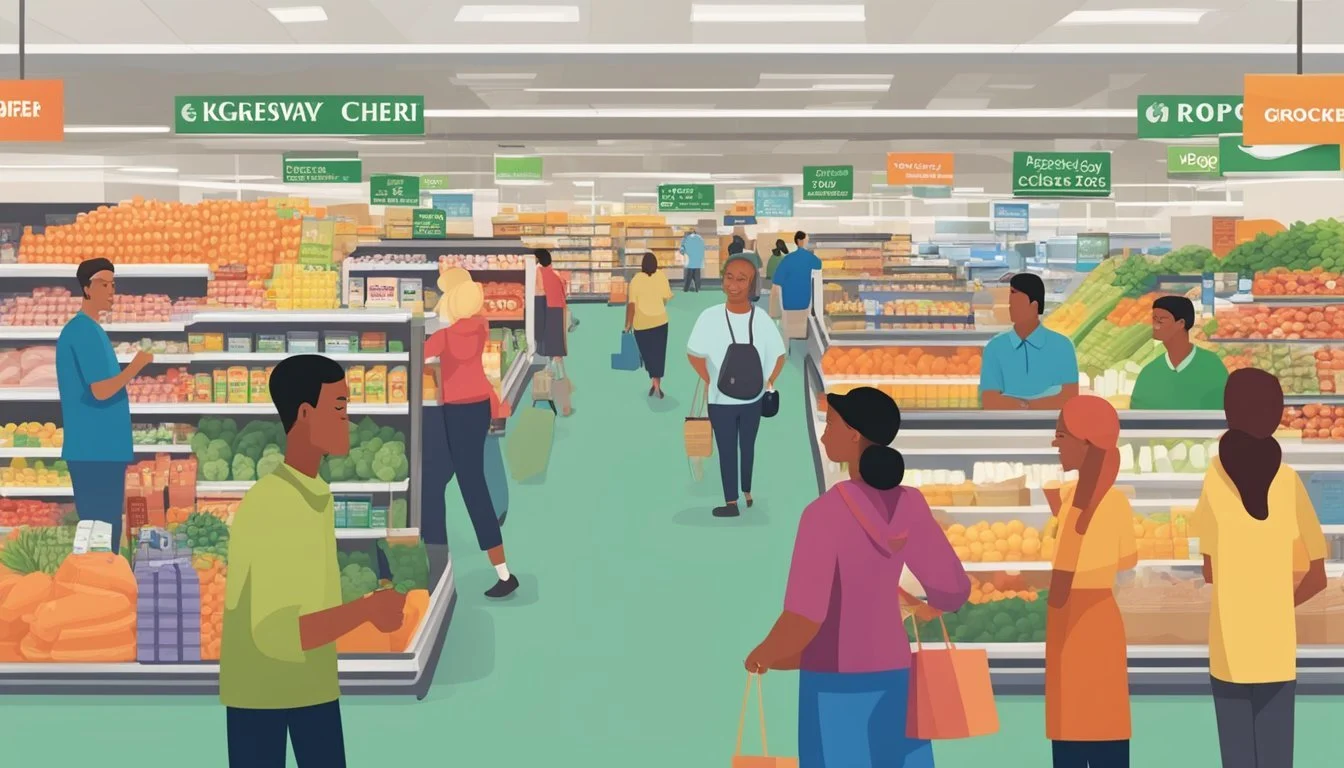Is Kroger Cheaper Than Safeway?
Comparing Grocery Prices and Deals
Part of Our Grocery Store Guide with Details on Kroger Prices and Safeway Prices
When comparing grocery stores, consumers are often interested in which chain offers the best value for their money. Among the numerous options available, Kroger and Safeway are two major players in the supermarket industry, each with its own loyal customer base. Shoppers aiming to stretch their dollar look to these stores for affordable pricing without sacrificing the quality of goods they bring home.
The debate over whether Kroger is cheaper than Safeway has been a topic of discussion for budget-conscious buyers. Based on an analysis of various grocery categories, Kroger frequently emerges as a more economical choice. Reports indicate that staples such as cooking oils and meat products tend to be less expensive at Kroger compared to Safeway. This could translate into significant savings for shoppers who prioritize cost-effectiveness without compromising on the variety or quality of products offered.
In the context of overall value, while Kroger stands out in specific areas, it's essential to consider that grocery prices can vary based on location, sales, and loyalty programs. Therefore, while Kroger may generally present lower prices, the experience might differ depending on regional pricing strategies and individual store promotions. It is beneficial for customers to stay informed and compare prices themselves to determine which supermarket best meets their financial and shopping needs.
Comparative Analysis of Pricing
When investigating the price competitiveness between Kroger and Safeway, it is evident that Kroger typically offers more affordable prices. Researchers have consistently found noticeable price differences across various product categories.
Overall Price Difference
Analyses have revealed that Kroger often has a lower price point compared to Safeway. For example, the overall cost for a set of identical items at Kroger is markedly cheaper. This price difference can result in significant savings for the consumer over time.
Cost Breakdown by Common Items
A closer look at specific grocery items shows the disparity more clearly. For instance:
Extra virgin olive oil: Kroger offers its own brand at a significantly lower cost compared to Safeway's equivalent.
Canola oil: A bottle of Wesson canola oil is over $1 cheaper at Kroger than at Safeway.
This pattern extends across various staples, suggesting that Kroger maintains a competitive edge on common grocery items.
Supermarket Chain Ratings and Surveys
Surveys and ratings by Consumerpedia and similar consumer-focused organizations reflect these pricing trends. They typically show that stores like Kroger rank high for value due to their more affordable prices. Such findings are supported by data indicating average prices, with discounters like Walmart and Kroger positioned well below the all-store average for grocery costs.
Quality and Selection of Products
In the comparison between Kroger and Safeway, consumers often weigh the quality and variety of items each store offers closely alongside their pricing structures.
Produce Quality Versus Cost
Kroger offers a wide array of fresh produce, which is competitive in both quality and price. Customers can often find promotions on seasonal fruits and vegetables, making Kroger a cost-effective option. Conversely, Safeway typically provides high-quality produce but may command a higher price, potentially due to partnerships with premium suppliers.
Meat, Seafood, and Dairy
When it comes to meat and seafood, both grocery chains stock a variety of options. A specific comparison of prices reveals that Safeway sometimes offers seafood, such as salmon fillets and raw shrimp, at lower prices than Kroger. For dairy products, both Kroger and Safeway have a comprehensive selection, including their own brand lines that often undercut the cost of national brands.
Organic and Specialty Options
Organic produce and specialty items are increasingly important to health-conscious shoppers. Kroger boasts an extensive organic section, often with competitive prices. Safeway also has a diverse range of organic and specialty products, though these might come with a premium price tag, reflecting their targeted market of consumers looking for exclusive items or brands.
Discounts and Savings Opportunities
Kroger and Safeway offer several ways for customers to save money, from membership rewards to weekly specials. Understanding each store's discount structure can help shoppers maximize their savings when buying groceries.
Membership and Loyalty Programs
Both Kroger and Safeway have loyalty programs that provide customers with personalized discounts and savings. Upon signing up, customers receive a loyalty card which they can use to access various deals. At Kroger, this card allows customers to load digital coupons to their account, which apply automatically at checkout. Safeway's program offers similar digital coupon integration, ensuring savings are seamlessly accounted for during the purchase process.
Weekly Deals and Loss Leaders
Shoppers can find significant savings through weekly deals and loss leaders. These are products sold at a loss to draw customers into the store with the expectation that they will purchase additional items at regular prices. By regularly checking Kroger and Safeway's weekly ads, customers can plan their shopping around these discounted items, which often include essentials and seasonal goods.
Generic Staples and Store Brands
Purchasing store brands instead of national brands can lead to substantial savings without compromising on quality. Kroger offers its own brand for many staple items, providing a less expensive alternative to name-brand products. Safeway's waterfrontBISTRO brand, for example, offers competitive pricing on seafood, often at a lower cost per pound compared to national brands. Families in particular can benefit from buying these generic staples in bulk to stock up on necessities while saving money.
Geographical Price Variation
When comparing Kroger and Safeway, one must consider that prices can vary significantly based on geographical location and local competition. This variation influences the cost-effectiveness of shopping at either grocery chain.
Regional Pricing Differences
In various regions, Kroger and Safeway adjust their pricing strategies to accommodate local economic conditions. For instance, in metropolitan areas such as San Francisco, where the cost of living is high, both grocery chains may exhibit elevated prices compared to stores in more rural or less affluent areas. On the other hand, prices at Kroger and Safeway in regions like Washington state could be more competitive, reflecting the local market economy.
Local Supermarket Competition
The presence and density of competing grocery stores in a given area have a tangible impact on prices at Kroger and Safeway locations. In cities such as Washington, D.C., where consumers have a multitude of area options for grocery shopping, both Kroger and Safeway might offer more aggressive pricing to attract and retain customers. The table below illustrates how local competition could influence prices:
Location Number of Competitors Kroger Price Competitiveness Safeway Price Competitiveness Washington, D.C. High Very Competitive Competitive Rural Washington Low Less Competitive Less Competitive
The greater the number of competitors, the more likely both stores are to reduce prices to secure a larger market share.
Shopping Convenience
When comparing Kroger and Safeway, the convenience of shopping experiences can greatly influence a consumer's choice. This section breaks down the factors of store locations and accessibility, checkout efficiency, and grocery delivery options.
Store Locations and Accessibility
Kroger boasts a vast network of stores nationwide, making it a readily accessible option for many consumers. With a store count exceeding 2,700 across various states, shoppers are likely to find a Kroger in close proximity. On the other hand, Safeway operates approximately 900 stores, primarily located on the West Coast. Although Safeway has a strong presence in certain regions, Kroger's nationwide footprint offers broader accessibility for customers across various locations.
Checkout Efficiency
Kroger and Safeway offer self-checkout options to expedite the payment process. However, advancements in technology have further streamlined this process at Kroger locations with the addition of "Scan, Bag, Go" systems, allowing customers to scan and bag items as they shop. Furthermore, some Kroger stores have implemented shopping carts with mounted tablets, enhancing the checkout experience by facilitating quicker payment and reducing time spent in line.
Grocery Delivery Options
Kroger and Safeway both provide customers with grocery delivery services. Kroger charges a fee of $4.95 for one-time online ordering, $16.95 for a monthly subscription, or $99.95 for an annual pass for unlimited ordering. Safeway also offers delivery, with competitive prices that cater to budget-conscious consumers. They ensure that customers have the flexibility to shop from the comfort of their homes, but specific delivery fees and offers can vary based on location and promotional deals. Both grocery chains aim to meet the rising demand for delivery services, leveraging online platforms to facilitate easier grocery shopping.
Customer Experience Factors
When comparing Kroger with Safeway, it is essential to consider the varying aspects of customer experience, which may include the ambiance of the stores, the quality of service provided, and the policies that assure customer satisfaction.
In-Store Atmosphere
Kroger has made significant investments in the ambiance of their stores. They have opened new outlets and renovated existing ones, making sure that the shopping experience is both convenient and pleasant for customers. Enhanced lighting, organized shelves, and cleanliness are some of the typical features noted in Kroger stores which may provide a better in-store atmosphere compared to Safeway.
Customer Service Ratings
Customers generally rate their service experiences based on the attentiveness, knowledge, and friendliness of the staff, as well as the efficiency of the checkout process. Kroger, utilizing insights from thousands of self-checkout machines, has data-driven strategies to refine their customer service. This usage of technology and analytics might give Kroger an edge in customer service ratings over Safeway.
Return Policies and Satisfaction Guarantees
Both Kroger and Safeway offer return policies to ensure customer satisfaction, but the ease of the process can impact consumer preferences. Kroger’s policies are generally straightforward, offering returns with or without a receipt, which reflects their focus on consumer satisfaction. Additionally, the investments made post-mergers indicate a commitment towards maintaining policies that enhance the shopping experience, potentially setting their return policies ahead of competitors like Safeway.
Market Trends and Consumer Behaviors
In examining the cost competition between Kroger and Safeway, specific market trends and consumer behaviors have emerged as focal points. These dynamics are influenced by shopping habits and the impact of competing supermarket chains.
Shopping Patterns and Budget Trends
Consumers are increasingly polarizing into two distinct groups: premium and budget-conscious shoppers. The latter tends to spend approximately $250 per week on groceries, seeking value while balancing quality. Notably, families often prioritize cost savings, which guide their shopping patterns. With the rise of discount stores such as Aldi and Trader Joe's, and the presence of larger chains like Walmart and Target, consumers have a plethora of options to match their budget constraints and preferences.
Premium Shoppers: Prefer quality and brand reputation; less price-sensitive.
Budget-Conscious Shoppers: Prioritize savings; responsive to discounts and lower prices.
This divergence has caused supermarket chains to tailor their offerings and marketing strategies to cater to the evolving needs of both segments.
Impact of Competitor Chains and Discount Stores
Competition plays a significant role in pricing strategies among supermarket chains. Kroger's cost efficiency is not only measured against Safeway but also against behemoths like Walmart and warehouse clubs like Costco, which leverage their size for aggressive pricing. Additionally, specialty discount grocers like Aldi have gained market share by offering a no-frills shopping experience with a focus on lower prices, which has forced traditional retailers like Kroger to reassess their pricing to stay competitive.
Walmart and Target: Known for their wide reach and low pricing strategies.
Publix: Competes by providing a different shopping experience focusing on customer service.
Costco: Averages market share increases year-over-year, attracting budget-conscious bulk buyers.
The presence of these competitors necessitates that traditional supermarket chains innovate and adapt to maintain relevance and appeal to cost-conscious consumers.
Impact of E-Commerce on Grocery Shopping
E-commerce has notably reshaped consumer access and expectations in the grocery sector. Retailers like Amazon and mainstream supermarket chains are continually adapting to the fast-changing online environment.
Amazon Prime Influence
Amazon has significantly influenced the grocery industry through its Amazon Prime service. Amazon Prime, well-known for its expedited shipping, has expanded into Prime member deals on groceries. Prime members can access exclusive discounts, particularly around key commercial holidays such as Valentine’s Day. These Prime discounts offer savings on a wide range of products, increasing the incentive for consumers to complete their grocery shopping online.
Online Shopping and Consumer Habits
The convenience of online shopping has led to a shift in consumer habits. Shoppers appreciate the ability to place orders anytime and receive their groceries without leaving home. Supermarket chains are responding to this trend; for instance, initiatives like Kroger's ecommerce platform demonstrate a commitment to delivering a digital experience that offers value and personalized service. Consumers have come to expect features such as:
A well-organized online inventory
Freshness guarantees for delivered groceries
Personalization of shopping experience through predictive analytics
The merger of large supermarket chains like Kroger and Albertsons may further enhance the e-commerce offerings, combining resources to strengthen their online shopping infrastructure and potentially reduce costs for the end consumer.
Store-Specific Strategies and Branding
In the competitive grocery market, both Kroger and Safeway employ distinct strategies and possess unique branding approaches that resonate with their respective customer bases.
Kroger’s Market Approach
Kroger, with origins in Cincinnati, tailors its market approach by focusing on quality products at competitive prices. It has developed a loyal following by integrating technology with its retail operations, signifying its innovative edge. The cornerstone of Kroger’s branding is a commitment to freshness, quality, and customer-centricity, a strategy that has been discussed in episodes of the Consumerpedia podcast.
Safeway’s Community Positioning
Safeway differentiates itself by positioning as a community-centered store. This grocery chain emphasizes on-site experiences and a tailored selection that caters to the local demographics. Safeway’s approach to maintain a personalized connection with its consumers is reflected through its local initiatives and store-specific offerings.
Conclusion
When comparing the prices of Kroger and Safeway, the data indicates that Kroger tends to be the more budget-friendly option. Customers looking for the best value on grocery items might find that Kroger offers lower prices on key essentials, including cooking oils and meat products. In particular, surveys highlight that products like extra virgin olive oil and canola oil are notably less expensive at Kroger compared to Safeway.
However, price is not the sole factor to consider. The choice between Kroger and Safeway may also depend on factors such as product variety, quality, store location, and customer service. Safeway's perceived higher prices might be influenced by its exclusive brand partnerships and the breadth of services it offers, which can include delivery options.
In summary, budget-conscious shoppers are likely to find Kroger a suitable choice when aiming to reduce their grocery bills. It should be noted that this assessment is subject to change over time and market conditions. Consumers should periodically check prices, as both Kroger and Safeway regularly offer promotions and discounts that might affect the cost comparison.









